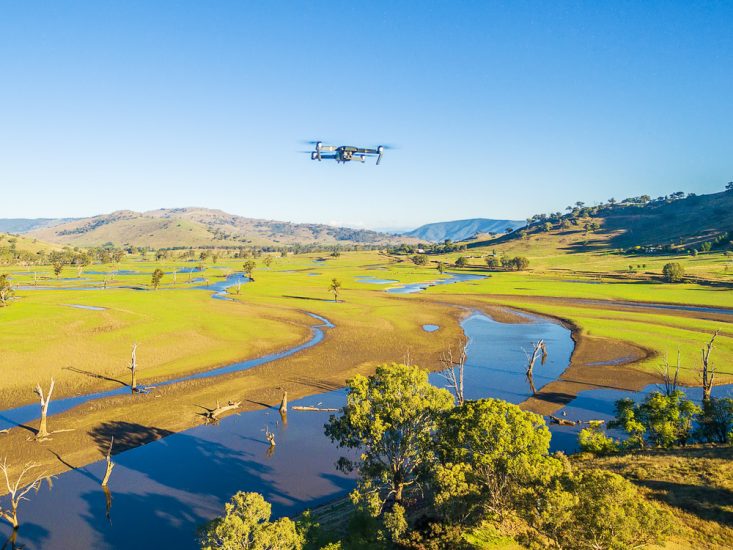The Australian Association for Uncrewed Systems (AAUS) submission paper to the Department of Infrastructure, Transport, Regional Development, Communications, and the Arts finds “insufficient evidence to justify the immediate implementation of Remote Identification in Australia, whether concerning accountability or security concerns”. A key reason is “the absence of a clear vision around a future airspace framework, airspace integration for drones (including the use of UTM) and drone use accountability to determine the most appropriate technical solutions to implement”.
According to AAUS: “It is essential to strike the right balance between innovation and regulation to ensure the growth of the drone industry while maintaining safety and security. AAUS believes remote ID may have a role to play in a future UTM ecosystem.
“Additionally, we acknowledge that a broad Remote ID mandate may have potential unintended consequences, which need to be carefully evaluated and addressed before any decisive action. In our current stance, AAUS advocates for a cautious approach before considering any Remote ID mandate. We believe that it is crucial to thoroughly assess and analyze its potential impact on the UTM ecosystem and the wider drone industry.”
Conclusions of the submission paper
The submission document identifies the following reasons for delaying implementation:
- AAUS believes that in consultation with the broad aviation industry, the Australian Government and agencies needs to develop clear vision around a future airspace framework, airspace integration for drones (including the use of UTM) and drone use accountability to determine the most appropriate technical solutions to implement.
- This is a discussion that goes beyond the drone community and goes to the strategic direction of airspace and airspace traffic management for all airspace users. It is AAUS’ understanding that the Australian Future Airspace Framework is tasked to develop the strategic vision and roadmap for the Australian Airspace System – inclusive of considerations as it relates to drones, AAM, and alongside the needs of the existing aviation sectors, airports, and the ANSP.
- Before that stage, we recommend no action with respect to a Remote ID mandate. • Remote ID may have a place in a future UTM ecosystem.
- We do not believe that there is sufficient evidence to justify implementation of a Remote ID mandate in Australia based on accountability or security concerns.
- There are potential unintended consequences of a broad Remote ID mandate.
Membership survey
AAUS’ findings are the result of a membership survey, plus discussion amongst AAUS membership advisory groups and other industry stakeholders. For instance:
– Is the desired outcome one of airspace protection? If so, how this intended to work alongside the National Drone Detection System?
– Is the desired outcome one of airspace situational awareness? How does this work in Class G airspace where general aviation does not have a mandate to equip?
– Is the desired outcome to address security concerns?
– Is Remote ID a necessary building block for UTM? If so, does the technology solution require network based Remote ID (NRID)?
– Is registration a necessary building block for Remote ID?
– Does the drone industry have a social license problem and, if so, will Remote ID address this issue?
– Does the drone industry have a non-compliant operational problem and, if so, will Remote ID address this issue?
Remote ID safety benefits
AAUS found “standalone Remote ID, as defined today, is not a form of electronic conspicuity. From that perspective, it makes sense to us that if we want to integrate drones into airspace alongside traditional aviation then we should carry compatible equipage that supports a common awareness of air traffic across all airspace users. It is important to note that current Remote ID specifications have not been verified for use in traffic awareness and separation applications.”
Remote ID security benefits
AAUS found “concern over the assumption that Government needs to keep the Australian drone industry accountable. Presumably this is related to addressing public concerns and maintaining our social license to operate drones in the vicinity of population centres.”
Government action
AAUS understands “that much of this work may already be occurring in the background within the Department, CASA and Airservices Australia but very little of it is visible to the aviation industry”.
According to the AAUS submission paper: “Support and feedback on the potential use of Remote ID was mixed and AAUS believes that this stems from an absence of a clear vision on what outcome we are trying to achieve with this technology and how it fits into the broader UTM and technology architecture.
AAUS provides a single representative voice for the full breadth of the drone and urban AAM industry. AAUS’ 3,000 members span small-to-large enterprise, manufacturers, licensed and unlicensed operators, training providers, academic institutions, Government, and other supporting technical and professional services in the Australian drone and AAM industry.
Read the submission paper here
For more information visit:
www.aaus.org.au
(Image: Shutterstock)




